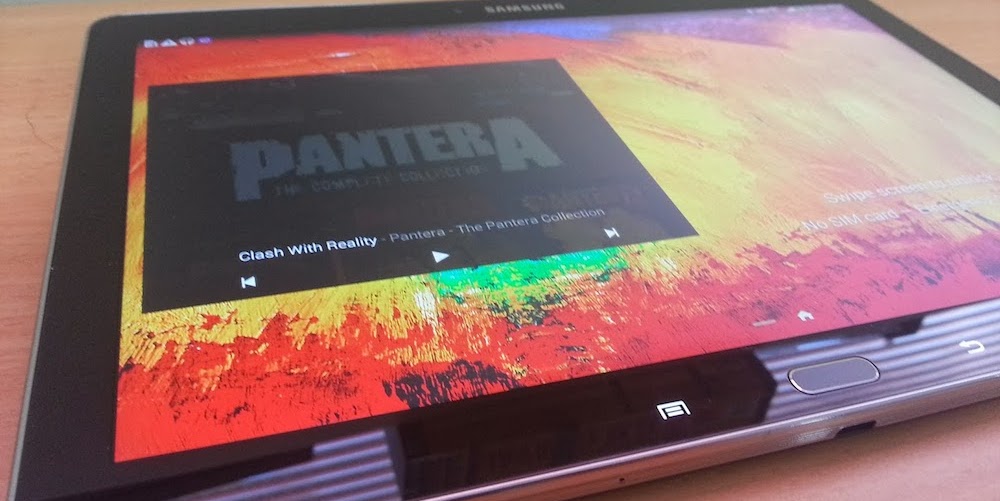
Samsung have been making some impact in the tablet market in the past 12 months but does the 2014 edition of the Galaxy Note 10.1 stand out in the ever-growing crowd of premium tablets?
Samsung are the big success story when it comes to Android, they dominate the market with sales figures, profits and a huge market share with their “Galaxy” range of devices; the Galaxy S range of phones and the Galaxy Note range of phones and tablets.
Apple’s iPad has held the lion’s share of the 10” tablet market since its launch, so there’s no surprise that many of the 10” tablets in the higher end of the Android market use the iPad as a benchmark.
Samsung’s most recent contender in the 10” tablet land is the Galaxy Note 10.1 (2014), which is the new iteration of the original Galaxy Note 10.1 released in 2012. It comes inside wood-grained cardboard packaging, as well as a wall-charger, MicroUSB cable, earbuds, and a SIM / Micro SD removal tool.
Superficially, at least, the packaging and the tablet itself bear a strong resemblance to Samsung’s earlier releases; a consistent design language and manufacturing process has allowed Samsung to develop its own unique first impression, making it easy for users to transition from one device to another, to upgrade, or to switch between phones and tablets.
Let’s see what’s inside this one.
- 3GB of RAM, the benefits of which are easy to notice when you’re hammering the device
- Cat4 LTE, empowering mobility and convenience
- Storage expandable by Micro SD.
- A decent main camera with flash
- It’s quite heavy, especially for those considering an upgrade from a smaller tablet
- The notifications are poorly presented, and not optimised for a large screen
- There’s no NFC, but on a tablet this might not matter much
- The hardware buttons are a bit intrusive and increase the bezel width needlessly
The Hardware
First up, let me say that I like Samsung hardware generally. I think it looks modern and edgy without being “out there”, and Samsung have delivered on this once again with the Galaxy Note 10.1 (2014). Dating back to the Galaxy S2 the phone was edgy in looks for the time and proved to be the start of the “Galaxy S” success story for Samsung. The Galaxy S3 built on this success with a larger form factor that remained sleek, modern and professional looking with the added bonus of building the momentum of the Galaxy S range of phones. While the first round of Galaxy Note Tablets were essentially oversized Galaxy S phones, they were clean and aesthetically pleasing. Throughout the development of Samsung’s hardware, they have continued to use lightweight materials that not only look good, but feel good in your hands too.
Powered by a 1.5Ghz Quad Core Processor and 3GB of RAM, the 2014 model is not the highest spec tablet out there, but it’s very much at the pointy end of things. The 2560 x 1600 resolution screen at 299ppi is ticking all the right boxes for the device to be a big seller — there are higher ppi (pixels per inch) devices out there, but this is not a device to be disregarded.
The physical home button provides the “this is a Samsung device” familiarity and has a very comfortable, mechanical feel to it. While the home buttons is very familiar and comfortable, the placement of the power and volume buttons feels a little awkward when you’re holding the tablet in landscape position. The power and volume buttons are both located on the top edge of the tablet when held in landscape position, the power to the far left with the volume control 1cm to the right of that. It feels as though this was a compromise to allow the speakers to be at the top of the left and right sides of the device to allow for the best viewing experience with regards to video playback.
The headphone jack resides on the left side at the extreme top which is a very smart place to put the connector when considering the majority of users are right handed and will therefore use their right hand to type or open apps. The headphone jack being placed where it is means less cable tangles when you’re using headphones.
As you would expect from most devices nowadays, the charging port is on the bottom edge of the device in the center; directly below Samsung’s home button which for anyone who’s used a Samsung device since the Galaxy S2 will be very familiar in it’s appearance and behavior. bottom edge is also where the microphone resides for uses such as Skype calls, Hangouts and (if you’re using the tablet that way) phone calls through your mobile carrier.
For those who choose to add a sim card or MicroSD to the tablet, your slots are on the right side of the device at the bottom. The sim slot at the extreme bottom and the MicroSD slot approximately 1 cm above that.
Build Quality
The Galaxy Note 10.1 (2014) looks great and feels great, it’s comfortable to hold and very easy on the eye. There’s some weight on the the device which has solid construction but there’s a couple of elements that concern me a little for the longevity of devices though, particularly the faux leather back. While it is very good looking and feels great in your hands, it has the effect of reducing the rigidity of the device a little and results in the device feeling surprisingly flexible when you put some twisting pressure on it. I must stress though that this isn’t something that would occur in day to day use, but rather something that is done during review to feel how solid the device is. When it comes to day to day use and solid construction, the Galaxy Note 10.1 (2014) holds up well.
Screen
The screen is a 10.1” PLS LCD which runs at 2560 x 1600 resolution and 299ppi, so it’s ticking the boxes that most users are going to want from a large screen display, and it surpasses the screen specs of what I believe is one of (if not the best) tablets of 2013 in the Sony Xperia Tablet Z.
The bezel is a little on the large size, allowing for users like myself who aren’t necessarily the most dextrous of users, and it is not intrusive to the overall feel of the tablet, as some recent devices have been.
Traditionally speaking, Samsung have calibrated their screens well to display images and video playback extremely well and they’ve delivered very well on this measure. The video playback is really clean, crisp and doesn’t suffer any of the common screen issues that low spec devices do, such as shadowing or blurring on the screen, even when playing x264-encoded videos. On top of the outstanding video playback, the colour saturation on static images is more true to life that previous Samsung tablets have offered. While it’s still not perfect, it is very good.
Cameras and Mic
The 8MP rear facing camera — which includes a flash — produces some decent photos and is able to capture 1080p full HD video at 60 frames per second. This kind of performance is much better than the average tablet camera (and surpases even some smartphones), and while taking photos and videos with a tablet can look quite silly, it’s certainly a viable proposition here.
The shutter lag on the software is roughly the same as personal device the Samsung Galaxy S4, and the software offers the usual range of camera modes such as sports mode, panorama, best photo, drama and night mode. The resolution captured is high enough that the OCR in the Google Drive app was able to PDF an image of a document successfully, and searches based on the content of the document were as accurate as ever on the Drive search bar.
In short, as long as you’re prepared to invest the time to setup a photo appropriately, the results shouldn’t disappoint you but it’s not going to be a good ‘point and shoot’ to capture those moments with fast moving targets like kids! Save those for a smartphone, or better yet, a dedicated camera.
The front facing camera (as you would expect on a 10” tablet) is intended for video calls and messaging apps such as Skype, both of which work extremely well on this device. A clear image, and a nice big screen to see the other party makes for the perfect video conferencing device.
What has really been a standout for me is the quality of the microphone when either in a video call or recording video on the tablet. Even at a distance of several meters away, the audio pickup is quite impressive. The recorded audio is crisp, clear and has a good range of sound without becoming too distorted in noisy environments.
The S Pen
The S Pen is a great addition to the functionality of the Galaxy Note range and enables a wide range of interfacing options with the device, even more so with the recently introduced AirView on the Note 10.1 (2014). For example, there are traditional controls, such as screen capture, that can be achieved by using the normal process of holding the power button and home button for 1 second, pressing the tip of the S Pen to the screen for 2 seconds, or by holding the button on the S Pen and circling the area you wish to capture.
Other functions offered by the S Pen (or any Wacom-compatible Stylus) include note taking with the included S Note app, opening apps, the ability to tap type on the keyboard and a few S Pen specific applications can be easily controlled and managed with the S Pen.
On the smaller Galaxy Note 8 that I reviewed in 2013, I couldn’t see myself using the S Pen daily but with the larger form factor and a little retraining myself, I have been using the S Pen pretty much every day without fail on the 10.1” tablet. It ‘feels’ more natural to be doing so on the larger device and due to the size, the S Pen does add useful functionality, whereas with the 8” tablet, you could hold it similar to a phone and use 2 thumbs to accomplish the same task in less time.
Sound
The stereo speakers are pretty good (for speakers that are physically as small as they are) and are well positioned near the top of the device for use in landscape mode. By being so placed, it’s easy to hold the tablet in a comfortable position without blocking the speakers with your hands. The speaker output is loud enough to be heard in a bag, even in a relatively noisy environment, and even during a video call with the volume right up, the sound didn’t distort or cause echo through the microphone.
As is the case with most tablets though, when you’re listening to music, the speakers are not really up to the challenge. For reproducing music at a background noise level, the Note 10.1 (2014)’s speakers are adequate, but they really don’t do too well for more than this. The speakers themselves are tiny, capable of producing appropriate audio for video calls but lacking the full range of sound that someone listening to music would expect from their listening experience. This isn’t a problem peculiar to the Galaxy Note 10.1 (2014); all tablets suffer the same issue – you can’t jam a decent speaker into the space that is allowed inside tablets. The included earbuds improve the experience somewhat, but as with most included earbuds, the quality isn’t overwhelming, and you’re better off with a higher quality set of headphones.
I’ve had a lot of good things to say about the sound reproduction that Samsung devices offer in the past and the Galaxy Note 10.1 (2014) is no different, with in ear buds or over ear headphones the sound reproduction was outstanding. Some cheaper devices that put out lower power through the headphone port have disappointing bass and the mid-range audio that falls flat. On the Note 10.1 (2014), the bass had punch and the mid-range sound was crisp.
I’m not a big fan of the Samsung Music Hub and while there is an included trial with the purchase of new Samsung devices, I found myself heading straight for Google Music instead. What truly impressed me with the sound output of this tablet is that the Equalizer settings actually did make a very obvious difference to the already impressive audio quality. It’s another improvement over the previous Samsung devices I’ve reviewed and even over my Galaxy S4, where the difference using the equalizer is negligible.
Connectivity
Besides the normal connectivity options (which I’ll go into below), you might find it interesting to note that the Note 10.1 (2014) can be used to make phone calls, so long as you have a SIM card inserted.
This works best with a wired headset or Bluetooth headset in use, but if you feel like using your tablet as a speakerphone, you could do that too. The audio quality is perfectly acceptable for a speakerphone, but in the interests of privacy, you’re probably best to avoid this function.
During the review, I connected the Note 10.1 (2014) to the Vodafone network, and it performed well across the range of 3G and 4G options (network permitting). Given the range of cellular networks and frequencies supported, this tablet will work well on any Australian carrier.
Bluetooth isn’t a new technology, and it’s no surprise to see it in any and every device nowadays and Bluetooth 4.0 with Advanced Audio Distribution Profile (a fantastic explanation of A2DP can be found on the PC Authority Website) is slowly but surely becoming the norm for high end devices. I wasn’t able to test the A2DP technology in the Note 10.1 (2014), but the other functionality provided by the Bluetooth 4.0 integration was top notch. The tablet easily paired with other devices — such as my car kit, and tethered to a laptop — and the audio quality on the car kit was great, and the data speeds fast when tethered.
Bluetooth 4.0 also enables low-energy use with compatible devices, and the dreaded battery drain from Bluetooth on devices past isn’t something you’ll experience with the Note 10.1 (2014). Using Bluetooth for audio, data and calls didn’t make a dent in the battery.
In terms of Wi-Fi, the Galaxy Note 10.1 offers the full suite of 802.11 a/b/g/n/ac and functions as a wireless hotspot if you have a carrier SIM card installed in the device.
Battery
The battery offers a whopping 8220 mAh of power. Even on my deliberately heaviest day of use on the tablet, filled with streaming video, video calls on Skype and generally smashing the battery as hard as I could, I couldn’t drain the tablet’s battery easily.
I had to concede defeat, as short of streaming 10+ hours of HD media, I just couldn’t drain the battery. Samsung deserves real credit here. A full day’s use, even with this heavy power consumption, is easily achievable.
In fact, in a more realistic use scenario, I have achieved the better part of 5 days battery life from the Galaxy Note 10.1 (2014) during a work-week. This included checking email, streaming a bit of YouTube, streaming music for between four and six hours a day, reading books (Google Play Books), web surfing and even a bit of writing for Ausdroid.
While I’ve not specifically measured the hours of playback I have used the device for, I believe Samsung are erring on the conservative side in their listed hour capabilities on the official site for the tablet. I would confidently say that without too much video playback or gameplay on the device, you’d get a full work week out of it without the need to recharge, making it a really good companion for road warriors who don’t necessarily have access to mains power for parts of the day, or even for a few days.
Performance
As a general rule, I try to avoid being bluntly positive about any individual facet of a review device. In this case, though, the performance deserves to be labelled outstanding. The specs of this device are pretty much a sharp as you can get right now, and it really stands out among the ever-growing list of contenders in the 10” market when you’re hammering the device with video playback, games or any other RAM or processor heavy tasks.
It’s the way a 10” tablet should be, but similar to previous Samsung tablets; probably $120 – $150 too expensive to make a massive impact in the market.
The fact that it’s sporting a Snapdragon 800 chipset and 3GB of memory are clearly the key factors in the truly outstanding performance of the device and make this tablet one that power users are likely to take a good look at.
Operating System
Out of the box the tablet is running Android 4.3 the most recent incarnation of Jelly Bean which, for the most part at least, does the tablet and Samsung justice. Yes, it would be lovely to have Android 4.4 KitKat on it but that will come in good time. There are a number of high end tablets that have been on the market longer than this such at the Xperia Tablet Z which has only recently received the Android 4.3 upgrade, so Samsung are behind the game but not behind their competition.
What excites me about this over previous Samsung tablets I’ve used is the relatively low number of included apps and bloatware on the device. There are some apps on there, most of which are useful to some extent, but the only bloat in the system is really directly associated with the Touchwiz UI that Samsung have. It’s one of the best default installations I’ve seen in the last 2 years with no carrier bloat and no unnecessary apps that you can’t get rid of.
Smart Software
Smart Stay, Smart Rotation, Smart Pause and Smart Scroll are all included inside the Touchwiz UI. That’s a lot of “smart” stuff going on, but it’s not going to make everyone happy and luckily they can all be independently toggled on or off.
Smart Stay
While I’ve not seen it being practical or useful on smaller devices (i.e. phones) that I’ve used in the past, it made its presence felt on the Note 8 review from 2013 and has shown itself to be very useful on the larger screen. Basically, the software looks for your eyes at short intervals and if you’re looking at the screen still you won’t need to touch or do anything to keep the screen on. The auto dim then turn off feature is a battery saver for many users and causes aggravation for just as many who are still using their device but haven’t touched the screen for 30 seconds or so.
Smart Rotation
Possibly the weirdest “smart” enhancement yet, based on the orientation of your head; the screen will change its orientation to match.
Smart Pause
Works well with the included app for video playback, incorporated with the same technology as smart stay; Smart Pause detects when you’re no longer looking at the screen and pauses the video until you look back at the screen. Useful if you’re in a distraction rich environment, but generally it’s more of a bragging spec of the UI than a useful one.
Smart Scroll
Pretty clever stuff, it uses a combination of your eyes and the angle of your head to detect when you’re near the bottom of a page and scroll down to the next section of the document. Until I used the Galaxy Note 8, I hadn’t successfully used this and had limited success on the Note 8 but the Galaxy Note 10.1 this technology has finally impressed me!
Included apps
I’m really pleased to say that Samsung appear to have learned from previous tablets and not installed a heap of apps that few people want, need or use. Their included apps are much more appropriate to the device you’re purchasing and have practical use.
S Note, ChatON, NYTimes, Samsung Apps, Samsung KNOX and WatchON are all included in the base installation of the OS for this tablet and while KNOX is very new and aimed at corporate markets, it’s still very niche in the current market needs.
Aside from this, the other apps are all something that most users can make use of. S Note is a no brainer for the note taking functionality it offers the device with the S Pen, NY Times is probably one of the best international news sources out there and WatchON is an extremely functional TV guide and Universal remote control.
Having said that there is minimal bloat in the OS installation on the tablet, on the 16GB tablet I’ve been testing on first boot there was less than 9GB free which brings the old discussion of “where’s my gigabytes?” back to the table. We’d much rather see advertised an available space, which is far more useful.
Fortunately, you can expand that storage space a bit with a Micro SD card, so the issue isn’t too bad, but it shouldn’t happen.
Video Sample
Camera Samples
Samsung Galaxy Note 10.1 (2014)
- 10.1” 2560 x 1600 LCD @299ppi
- Qualcomm Snapdragon 800 processor
- 3GB RAM
- 16GB Storage (32GB models available), microSD slot
- 8MP rear facing and 2MP front facing cameras
- 802.11 a/b/g/ac Wi-Fi with Bluetooth 4.0
- LTE: 800 / 850 / 900 / 1800 / 2100 / 2600
- HSDPA: 850 / 900 / 1900 / 2100
- Includes S Pen
- Android 4.3 Jelly Bean
- 8220mAh Battery
- 243.1 x 171.4 x 7.9 mm weighing 547g (LTE version)
This really is an outstanding device, it’s not without it’s faults; no NFC – probably not necessary on a tablet but a tablet that is marketed as a lifestyle “take everywhere” companion it feels like bit of a glaring omission, a few minor gripes about placement of buttons but even the much-lauded iPads have their faults. The biggest fault I have with the Galaxy Note 10.1 is the price.
I’m sorry Samsung, but it’s just not worth the current asking price. Like it or not, to be a true competitor in the 10” market, you need to have the price that significantly undercuts (ie. makes users think twice before completing their purchase) to the equivalent & current generation iPad, and that just isn’t the case here. The 32GB LTE model (RRP $799) can be found for $719 via Kogan. Of course you have the option of purchasing one on contract with Telstra. If LTE isn’t your thing, you can pick up the Wi-Fi model for RRP $649 (which can again be found slightly cheaper at online retailers).
Putting these gripes aside, if you have the budget that allows for the purchase of a Galaxy Note 10.1 (2014) edition, I wouldn’t hesitate for a moment to recommend it as a great purchase. It has some great features, a dazzling screen, brilliant performance and (sticking true to their winning formula) Samsung have included a MicroSD slot for expandable memory.
It’s the way a 10” tablet should be, but similar to previous Samsung tablets; probably $120 – $150 too expensive to make a massive impact in the market.
A bit expensive though it may be, the Samsung Galaxy Note 10.1 (2014) is a great tablet.
The Snapdragon 800 chipset and 3GB of memory are clearly the key factors in the truly outstanding performance of the device and Samsung really have done well on this device, I’ll be sad to see it go back to Samsung next week.

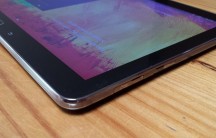
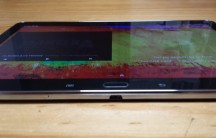

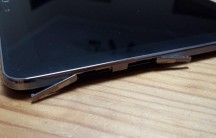
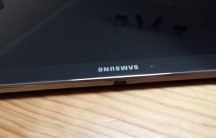

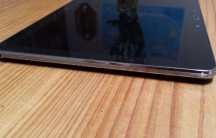

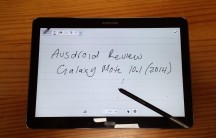
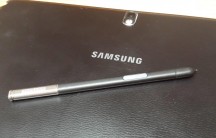





















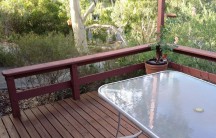



Not all tablets suffer from the sound issues… The Nexus 10 has amazing sound for a tablet… Made by samsung but they like to break the good things. Is it too much to ask for good audio? I am trying very hard to wait for the next possible nexus 10. Since I gave my nexus 10 as a gift to my mom. I’m tempted to buy it again if nothing comes out!
seems AOSP-based ROMs on non-nexus tablets are on the declined. the last one that has seen such is the Tablet Z.
PANTERA!! that is all. move along.
I would love a Nexus version of this (without the hardware button or touchwiz). Come on new Nexus 10!
Isnt the snapdragon variant 2.26ghz? Ie. 4g model. Anyway. Cant justify it if i have a note 3…
Hi Phil BRILLIANT DEVICE… I have had one for 2 plus months and find that Samsung still don’t have stock at there Experience store in Maribyrnong of the official covers. As a Samsung experience goes that’s a BIG letdown. Apple would never allow a little piece of moulded plastic to create a FIASCO like this to damage their hard earned world leading technical developments. I have the SG Note 3 phone too, so you can see that I have the money to have the best AND the best it is in the market and I will also add to the… Read more »
Had mine for a week, first droid tablet after 3 iPads, and I love it! Curious as to why you list the SIM model price, as surely all us geeks just use our phones as hotspots? Paid $679 at JB Hi Fi for the wifi 16gb – comparable to iPad price and while the build quality isn’t at iPad Air quality, it’s pretty damn close.